Phase 2 / 1907 coal car as built, c1909
Phase 2 / 1907 coal car as built, c1909
|
This post was updated on .
Before I began the kit bash of the Precision Vintage Classics C&S phase 2 coal car kit into the St. Charles coal car, I thought I should build one of the stock kits first, to trouble shoot construction issues.
But I decided to modify it to build a car that was only a couple of years old, circa summer of 1909. In the back of Grandt's Narrow Gauge Pictorial Volume VIII, page 222, there is a C&S engineering drawing of the cars as built, that is helpful with the original details. At each phase of construction so far, I have worked on the 1907 "stock" kit first. Progress so far:  First, I found that the side sills of the injection molded underframe had a significant draft angle. If this draft angle isn't filed off, so the outside of the side sills are truly vertical, the molded floor will not overhang the side sills evenly (or at all). Like the St Charles cars of this era, same number of grab irons, though they were located differently, and just 2 stirrups, but narrower (18") and hanging further down from the shallower side sill. The 1907 cars had solid, one-piece corner irons. I used cut down Grandt high side gon corner irons (no predrilled holes, in the wrong places, as in the kit).  The St Charles coal cars, like the 1902 (Phase 1) coal cars, had the brake staff mounted close to the centerline of the end, and the staff actually ran through the left end of the coupler buffer block. These phase 0 and phase 1 coal cars kept this brake staff arrangement until the very end. When the C&S launched into the yuuge car building program of 1907-1910, they applied a new version of brake staff gear to the "B" end of the car. The brake staff was located far outboard (only 18" from the outside end of the end beam), and used a new square lower bracket and the familiar upper ratchet with the two little vertical mounting straps. Evidently this was true of all cars (coal, box, stock and reefers) built during and after 1907. See differences below: 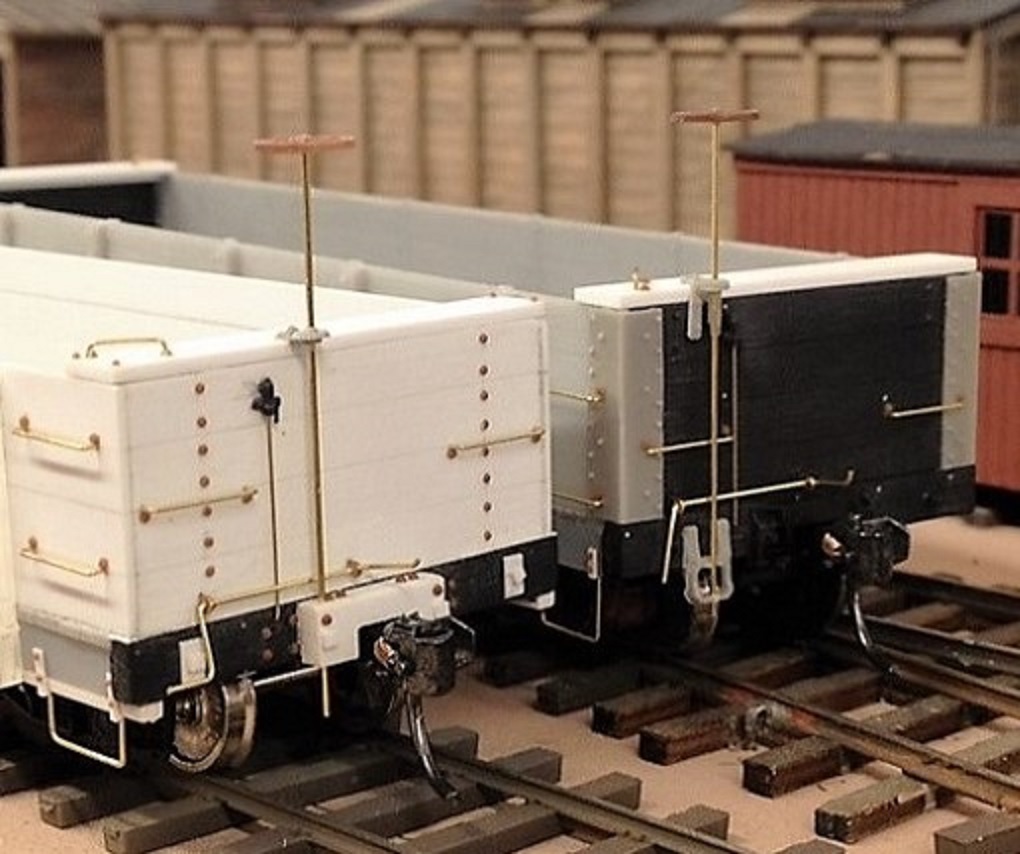 St Charles car on left, 1907 (phase 2) car on right. I don't believe it was until the USSA hardware was applied in the mid 'teens, that the familiar C&S outside chain/roller from brake rod to brake staff showed up, and a smaller lower staff bracket was moved back toward the center of the car, near the coupler striking casting. The cars are pleasingly different when compared from the side, but follow the same general dimensions and have a family look: 
Jim Courtney
Poulsbo, WA |
Re: Phase 2 / 1907 coal car as built, c1909
|
These are looking very nice Jim, one of the things that appealed to me C&S-wise vs the Grande was the Coalcars looked way more interesting than those Highside gons with a multitude of Stakes, and not to mention the 3 visual variations of Frames/Trucks.
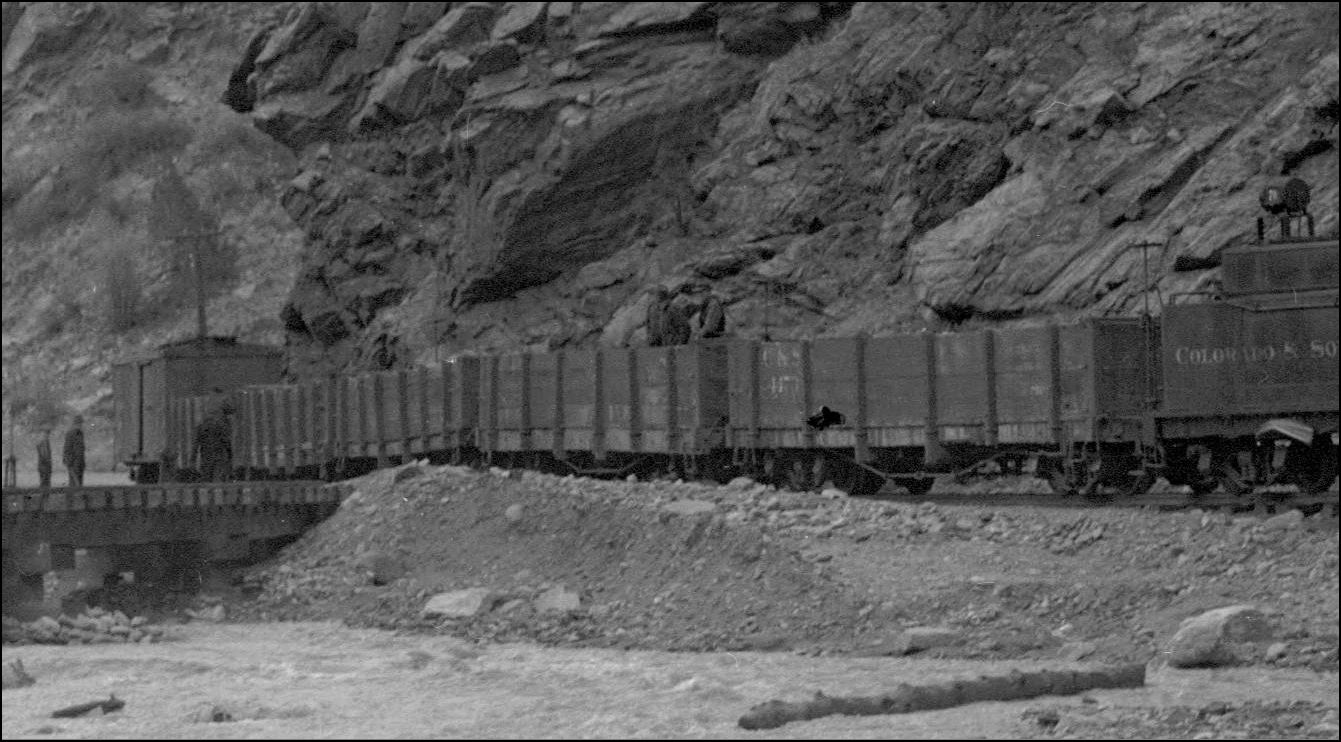 http://digital.denverlibrary.org/cdm/fullbrowser/collection/p15330coll22/id/42858/rv/singleitem/rec/139 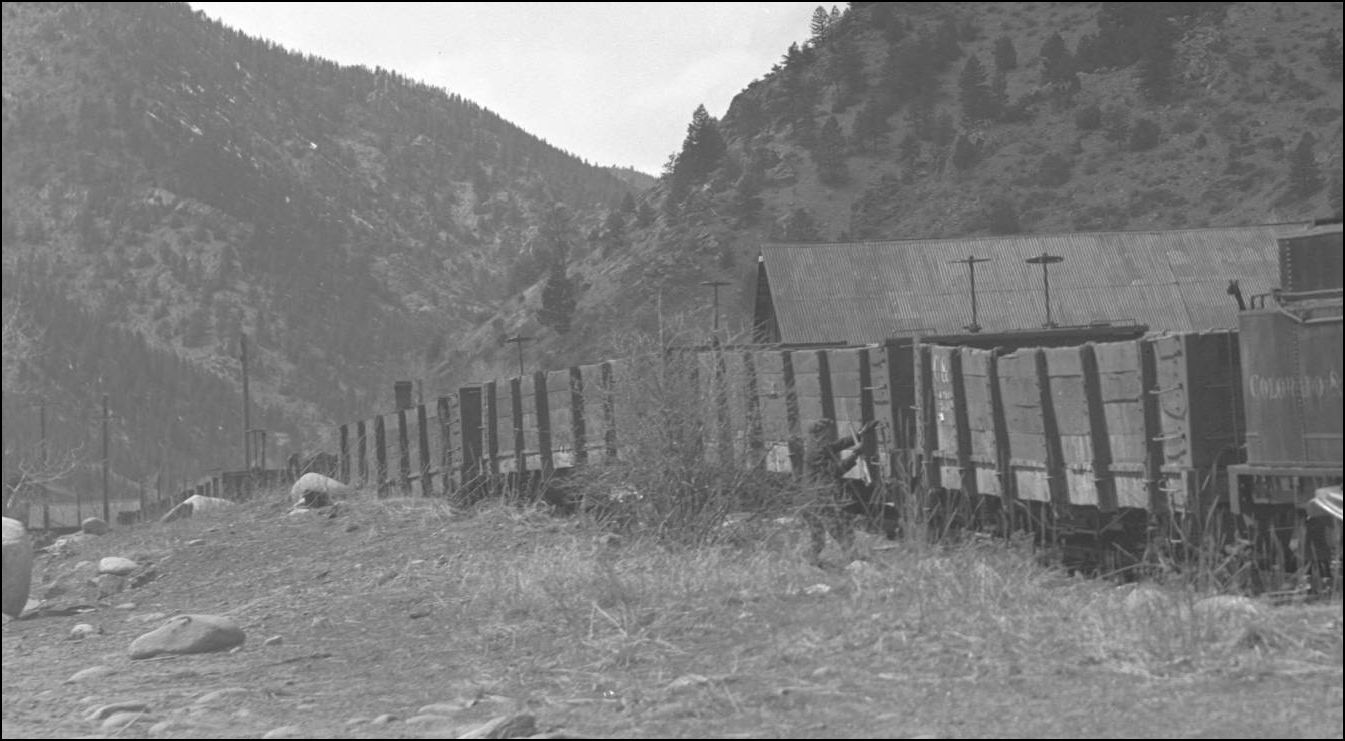 http://digital.denverlibrary.org/cdm/fullbrowser/collection/p15330coll22/id/42719/rv/singleitem
UpSideDownC
in New Zealand |
Re: Phase 2 / 1907 coal car as built, c1909
|
This post was updated on .
Yes, Chris, and in 1909 the three newest classes of coal cars each carried their own specific lettering styles:
1898 (Phase 0) St Charles cars with the delivery scheme as in Doug Heitkamps's builder's photo, though 10+ years old and weathered. 1902 (Phase 1) ASF cars in "The Colorado Road" upper/lower case Roman scheme, 6+ years old and mildly weathered. 1907 (Phase 2) Bettendorf bolster/truck truss rod cars were among the first cars to be lettered in the "C&S" block monogram, and were nearly new. Alas, I will not have any SUF coal cars, as my modeling period is set in June, 1909. The only SUF cars that I will build are the SUF reefers, delivered in early 1909. Why? When all the SUF cars of late 1909 and 1910 were cranked out by the C&S shops, most of the inherited cars from the DSP&P/DL&G were pulled from revenue service and became outfit cars or sheds. What I lose in SUF coal cars (50), I gain in Peninsular 30' twenty-ton coal cars (140, with both original and rebuilt side sills), plus a variety of 26' Litchfield flats, 27' UP built boxcars, 30' Peninsular boxcars and flat cars: 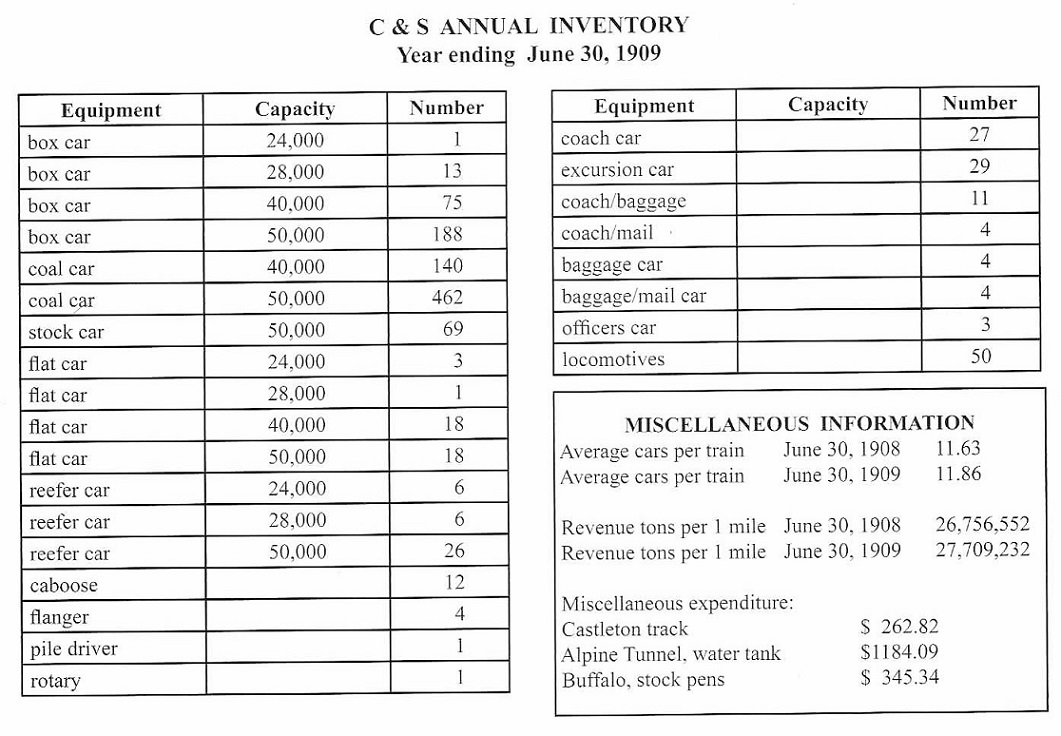 From the Klingers' South Park's Gunnison Division Memories . . ., page 310. As you can see, there were still 140 twenty-ton Peninsular coal cars in service in the summer of '09, like this guy: 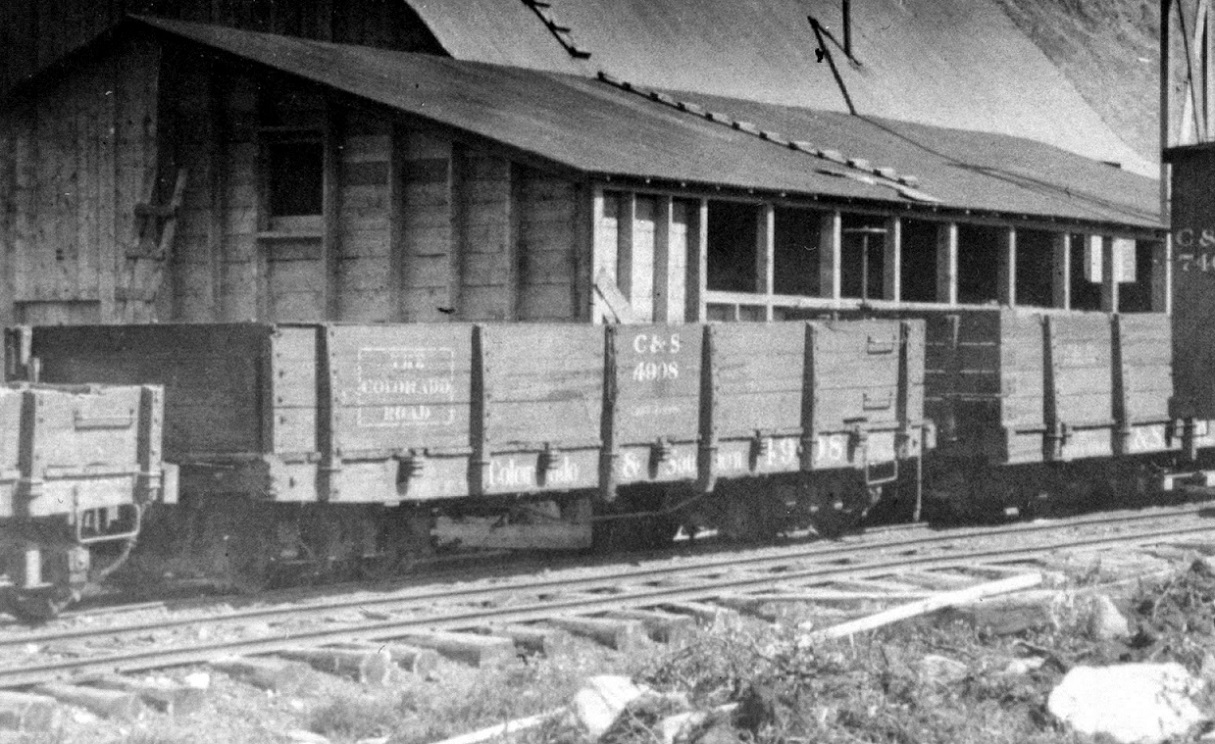 Note the St Charles coal car, with original end stakes, coupled to the right, And 13 fourteen-ton 27' UP built and 75 twenty-ton Peninsular boxcar still around; remember these friends?: 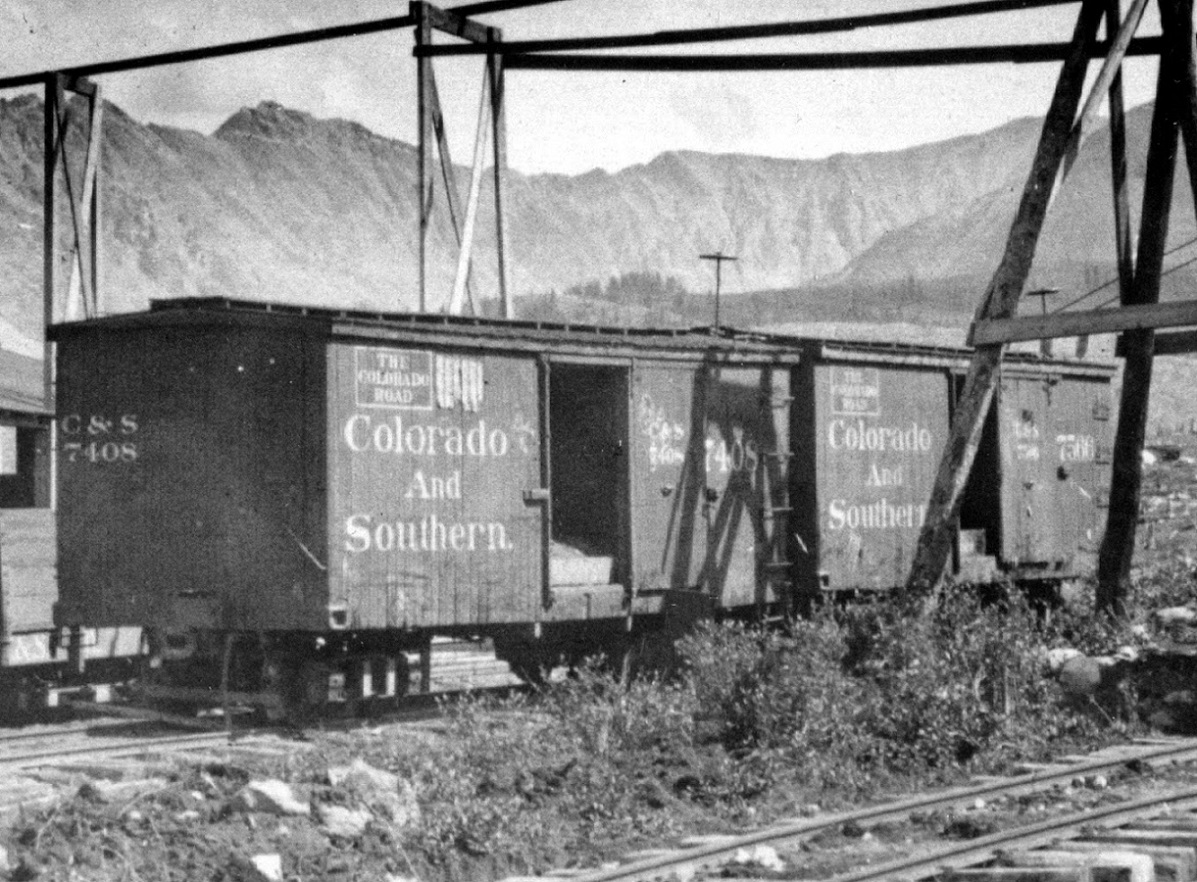 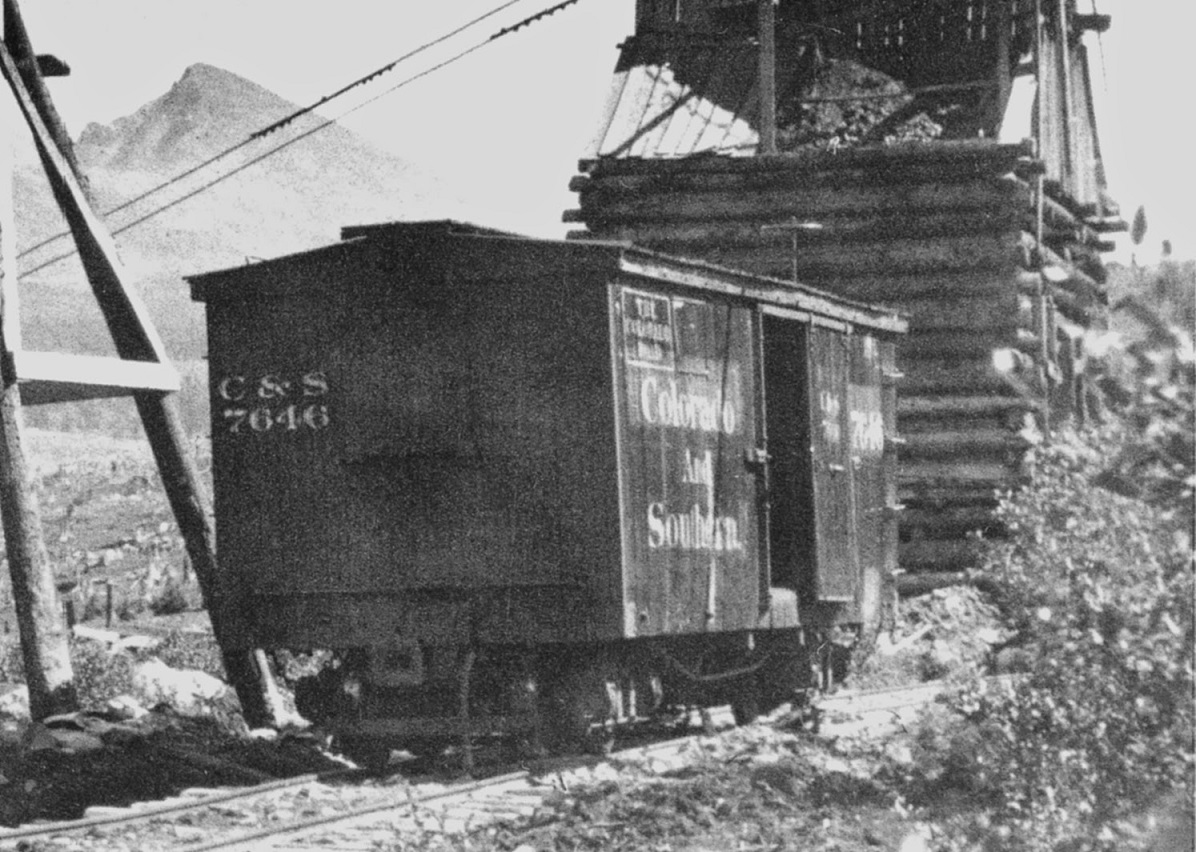 All three prior enlargements from: http://digital.denverlibrary.org/cdm/singleitem/collection/p15330coll22/id/38704/rec/367 And almost half the flats were twenty-ton Peninsular cars, with both new and original side sills: 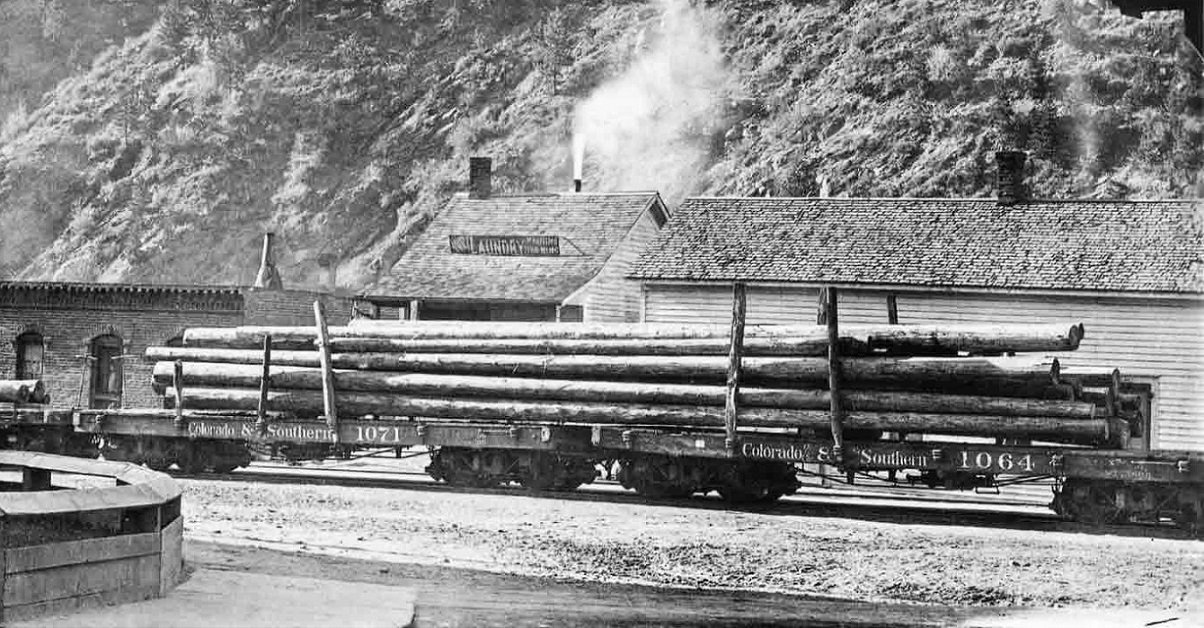 Photo courtesy of Doug Heitkamp (see "Poles on Flats" http://c-sng-discussion-forum.41377.n7.nabble.com/Poles-on-Flats-td3512.html). It was Derrell Poole's beautiful first decade C&S models that first got me interested in that era; the Klingers' three books provided further inspiration and made me want to model this phase of the C&S. (BTW, Keith, notice Chris's last photo -- the two 1902 coal cars behind the engines tender still have quite a few of the original fully tapered stakes!)
Jim Courtney
Poulsbo, WA |
Re: Phase 2 / 1907 coal car as built, c1909
|
This post was updated on .
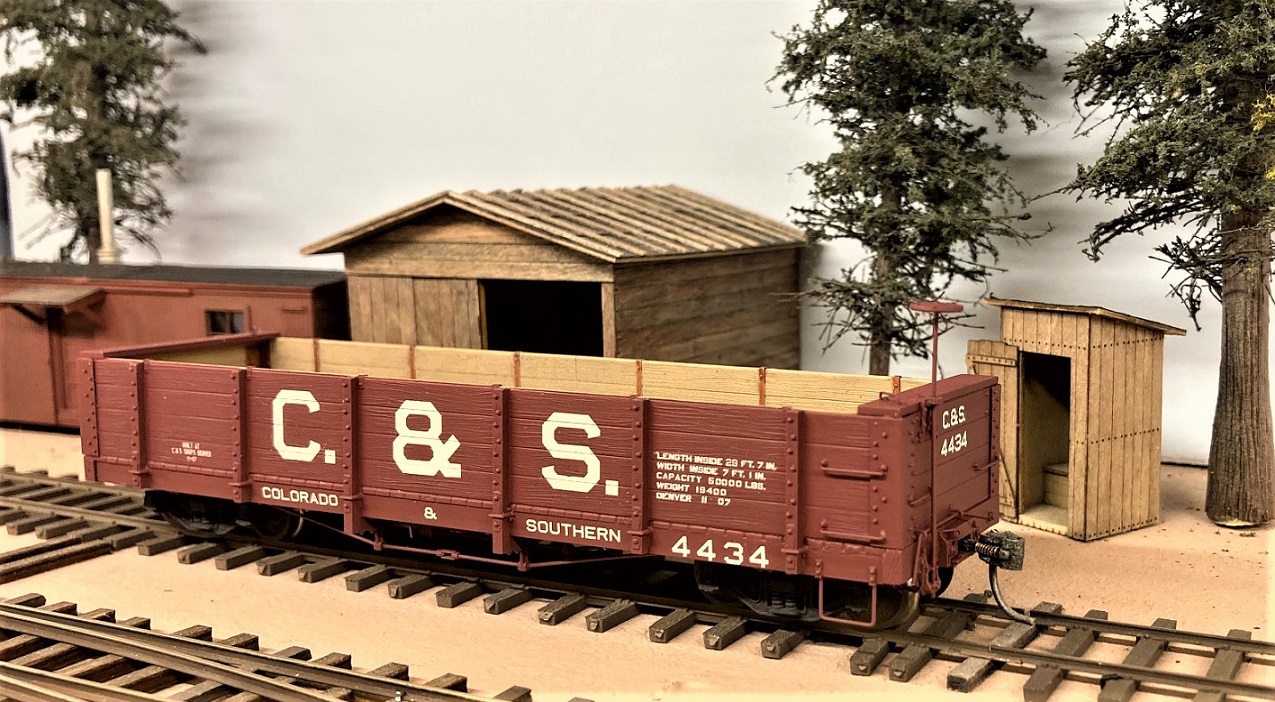 Okay, OKAY . . . so it's been over six years. But I finally finished this project. I made a New Year's resolution to finish all of my old projects before beginning new ones, a resolution that I've already broken. The Phase 2 coal cars left the C&S shops in two batches: 4408-4447 outshopped in November of 1907 4448-4497 left the shops in September of 1908 The only good prototype photo of an "as built" C&S phase 2 coal car, before USSA hardware, is this great photo that Bob Stears posted a while back: 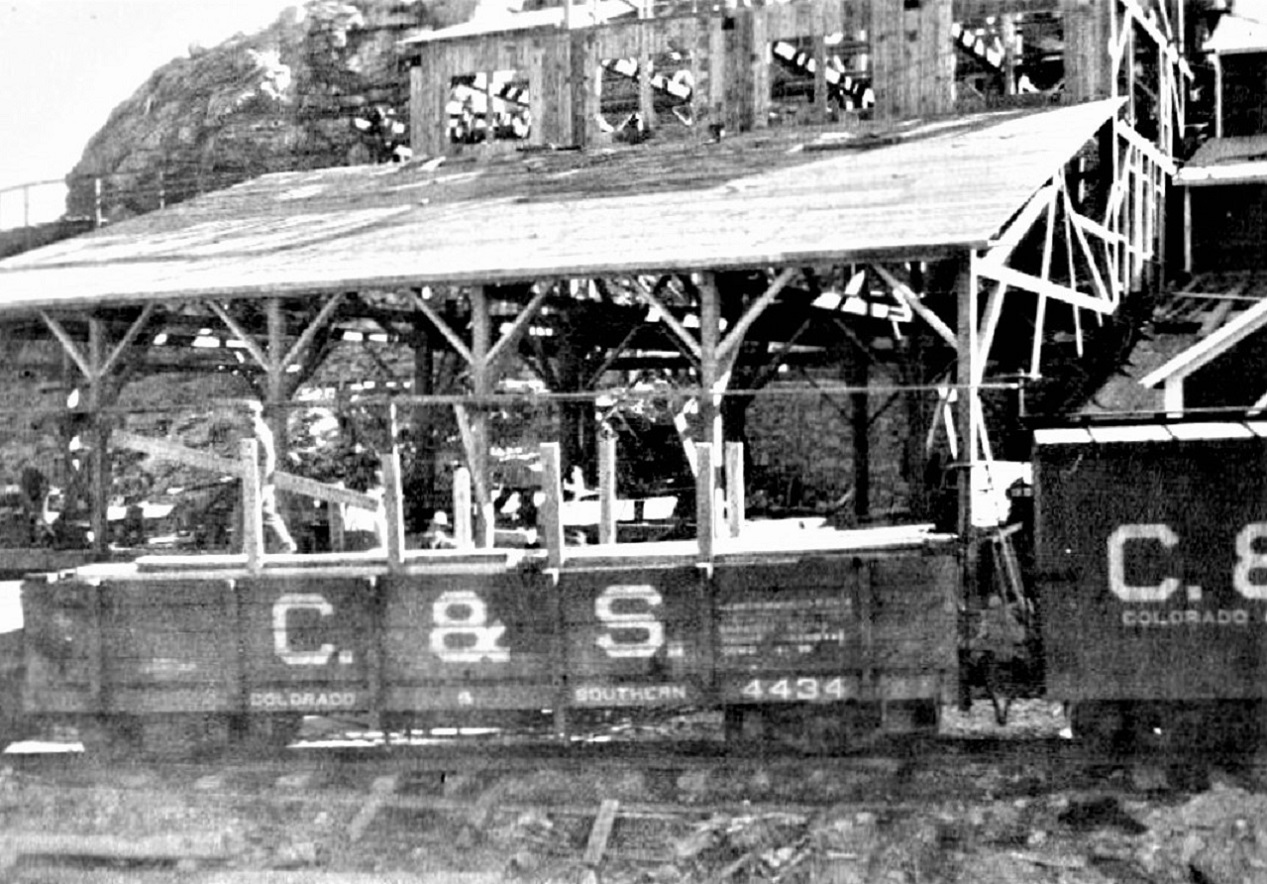 Blackhawk, c.1912. So, I lettered my model to match: 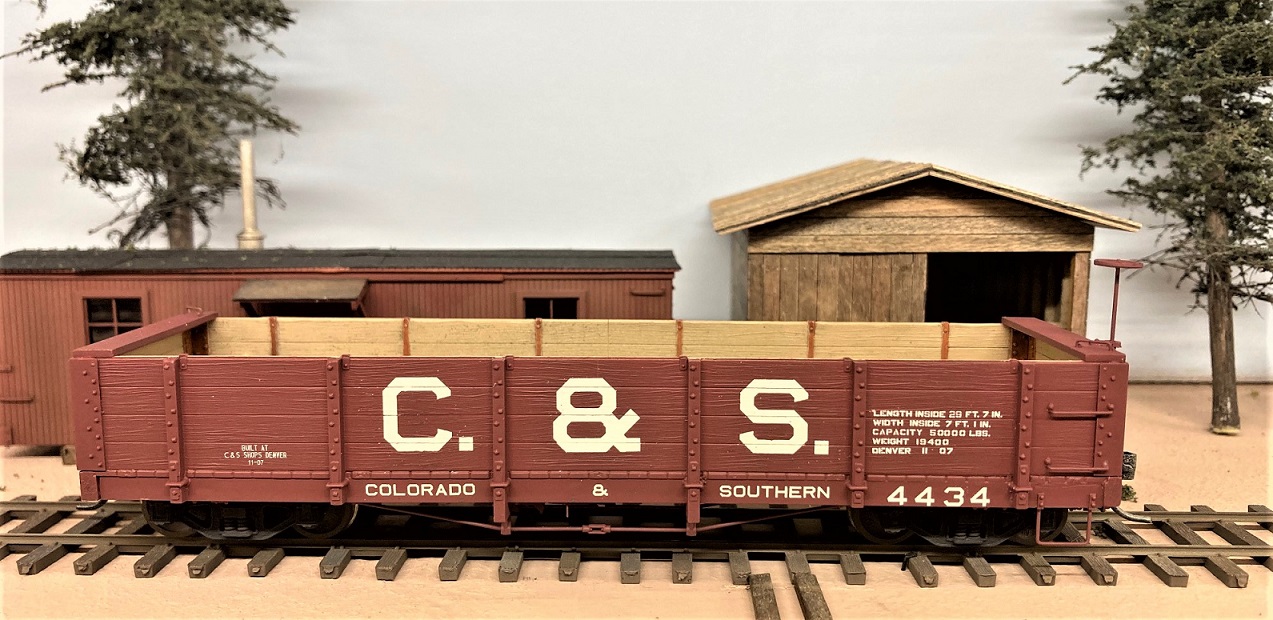 Now I've got about four more models of this type of car to build . . . 
Jim Courtney
Poulsbo, WA |
Re: Phase 2 / 1907 coal car as built, c1909
|
Wow, Jim, a lovely, crisp model. Well worth the 6 year wait.
Dave Eggleston
Seattle, WA |
Re: Phase 2 / 1907 coal car as built, c1909
|
Jim,
Very nice job on the Coal Car. Comparing it to the St. Charles car is a good idea and following your text, highlights the differences between the two (if you know where to look).  Again, nice modeling!
Doug Heitkamp
Centennial, CO |
Re: Phase 2 / 1907 coal car as built, c1909
|
Ok, thinking a little more.....
I believe that the Berlyn/PVC Sn3 Type II Coal Car kit has the interior hold down straps (I just made up that name) as flat bands, correct? I believe on the Grandt Line/Overland Sn3 Type III kits they are represented as round rods with a flat section bent over the top of the side boards? I'm not sure how they were represented on the Grandt Line HOn3 and On3 car kits, I don't have models in front of me now. Question - Assuming the hold down straps have round rods on the prototype, have you thought about filing the flat band off the interior of the sides, and replacing with wire or stretched sprue? I think that would give the model some additional detail and depth. Just a thought... 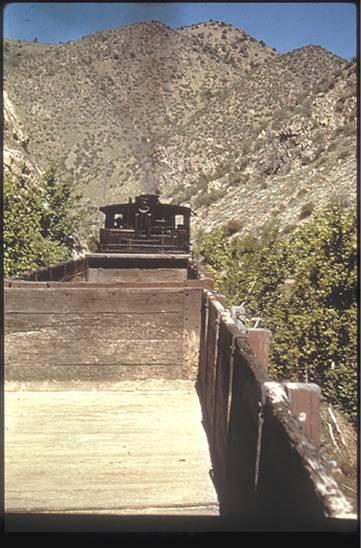
Doug Heitkamp
Centennial, CO |
Re: Phase 2 / 1907 coal car as built, c1909
|
This post was updated on .
Yep, Doug, the "hold down straps" should be "hold down rods". That's one thing that Berlyn got wrong when cutting the tooling for an otherwise very accurate, great kit. It isn't that noticeable until painted a rust color. My other gripe is that the wood grain on the floor and interior sides is raised, not recessed, so it doesn't take stains well.
I like your idea of modifying the "hold down straps/rods". Derrell's plans show the rod portion to be 3/4" to 1" in diameter. Plastruct makes styrene rod in 0.010" and 0.015" diameters. So, the band could be carved and sanded off just below the flat top portion and the styrene rod attached with the sides on the "flat", before attaching the sides to the floor and side sills. Would give a chance to add some recessed "grain" to the inside of the side boards as well. I'm about to start a couple more of the phase 2 coal cars--I'll try this out, see how it works. Check back in 5 or 6 years . . . 
Jim Courtney
Poulsbo, WA |
Re: Phase 2 / 1907 coal car as built, c1909
|
Jim
The Grande employed "hold down clamps" on their 1000 - 1499 and 9200-9574 series gondola as built in the form of a long "u-bolt" over the top of the sides and bolted to a plate under the side sill. for the 1500 -1899 series they were replaced by a flat bar applied on the inside only. Their purpose was to keep the sides rom buldging. As they did not accomplish this function they not replaced in later years before the 20's rebuilding programs. The use of diagonal "u-boles" on stakes 4 and 7 accomplished this. The following drawing dated Jan 4, 1905 proposed this fix ONLY 2 years after the arrival of the 1500 -1899 series, and proposed adding a fifth board to the sidesmaking the IH 50". 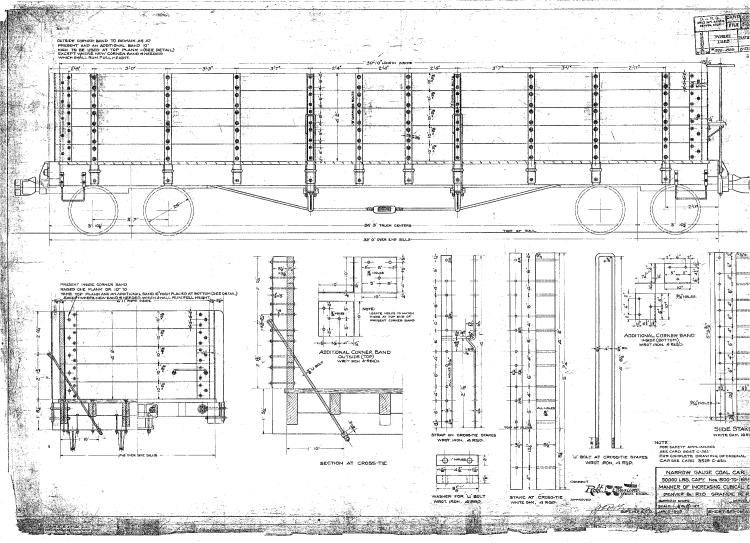 Pat |
Re: Phase 2 / 1907 coal car as built, c1909
|
In reply to this post by Jim Courtney
Jim, I use wire and a bit of foil from the top of the wine bottle.
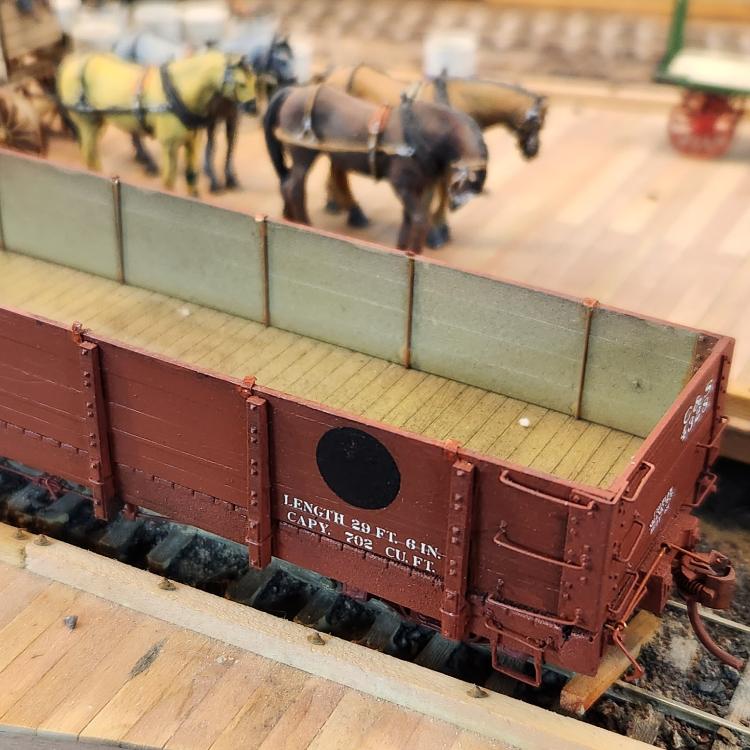 If I am feeling rascally, I punch a dimple in the end to emulate the carrige bolt that holds it in place. It justifies drinking wine with a real foil top. Plus you can save the cork to use to hold figures to paint. 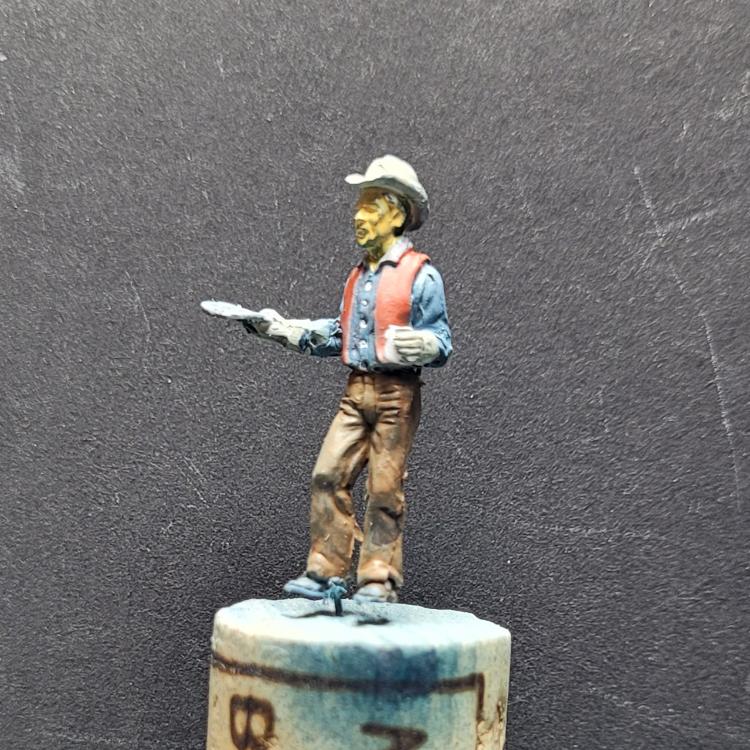
Keith Hayes
Leadville in Sn3 |
«
Return to C&Sng Discussion Forum
|
1 view|%1 views
| Free forum by Nabble | Edit this page |

